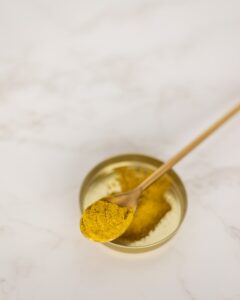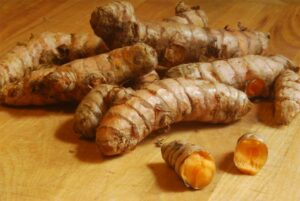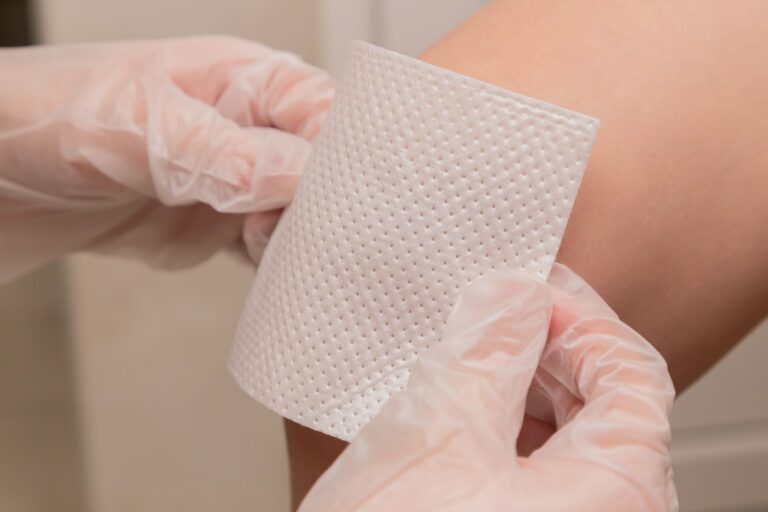Turmeric, a vibrant golden spice derived from the Curcuma longa plant, has been revered for centuries in traditional medicine for its potent healing properties. In recent years, scientific research has shed light on turmeric’s role in wound healing. This article explores the intricacies of turmeric’s involvement in the wound-healing process, with a special focus on its antibacterial properties.
Understanding the Wound Healing Process
Before delving into the specifics of turmeric’s impact on wound healing, it’s crucial to grasp the stages of this intricate biological process. Wound healing is a dynamic sequence of events that involves inflammation, tissue formation, and tissue remodeling. These phases are orchestrated by an array of cellular and biochemical responses within the body.

Turmeric’s Role in Wound Healing: A Natural Wound Remedy
Curcumin and Wound Care
At the heart of turmeric’s wound healing efficacy lies its active compound, curcumin. This polyphenolic compound is renowned for its anti-inflammatory properties and has garnered attention for its potential therapeutic applications in various chronic diseases.
Turmeric’s Antibacterial Properties
One of the standout attributes of turmeric in wound care is its robust antibacterial activity. Studies have shown that turmeric effectively combats a wide spectrum of bacteria, including strains that are notorious for causing infections in wound sites.
The Impact of Turmeric on the Wound Healing Process
Enhancing Granulation Tissue Formation
Granulation tissue plays a pivotal role in wound healing, serving as a scaffold for new tissue formation. Turmeric has been found to enhance the development of granulation tissue, expediting the healing process.
Effects of Curcumin on Collagen Deposition
Collagen, the main structural protein in the skin, is crucial for wound closure and tensile strength. Turmeric, through its active compound curcumin, promotes collagen production, aiding in the efficient repair of damaged tissue.

Anti-inflammatory Activity: Alleviating the Inflammatory Phase
The inflammatory phase is a crucial component of the wound healing process, as it initiates the body’s natural response to injury. Turmeric’s anti-inflammatory properties help modulate this phase, preventing an excessive and prolonged inflammatory response that can impede healing.
Turmeric’s Role in Chronic Wound Healing
Addressing Impaired Wound Healing
Chronic wounds present a significant challenge in healthcare, often associated with underlying conditions such as diabetes. Turmeric’s wound healing potential shines particularly bright in cases of impaired wound healing, where it demonstrates a remarkable ability to rejuvenate the healing process.
Diabetic Wound Healing: Targeting a Critical Need
Diabetic foot ulcers, a prevalent complication of diabetes, can lead to severe complications if not managed effectively. Research indicates that turmeric, with its multifaceted wound healing properties, holds promise as an adjunctive treatment for diabetic wound healing.
Optimizing Turmeric’s Wound Healing Efficacy
Curcumin Delivery: Oral Administration vs. Topical Application
The mode of curcumin delivery is a crucial consideration in harnessing its wound healing benefits. Studies have explored both oral administration and topical application, each offering unique advantages in specific wound scenarios.
Harnessing Turmeric’s Potential: Implications for Wound Management
Incorporating turmeric into wound care regimens, be it through turmeric dressing application or specialized formulations, presents an exciting frontier in wound management strategies.
Conclusion
Turmeric’s role in wound healing, fortified by its potent antibacterial properties and the curative prowess of curcumin, holds immense promise in revolutionizing wound care. As research continues to unravel the depths of its healing potential, integrating turmeric into conventional wound management protocols may pave the way for more effective, natural, and holistic approaches to healing. From acute wounds to chronic conditions, turmeric stands as a beacon of hope in the realm of natural wound remedies.

